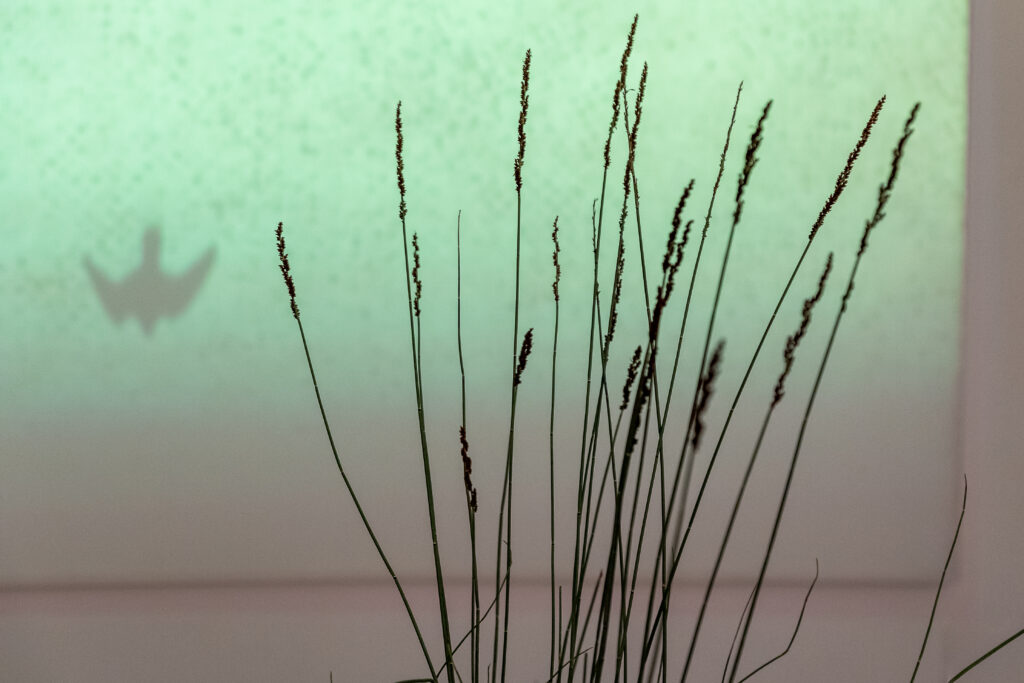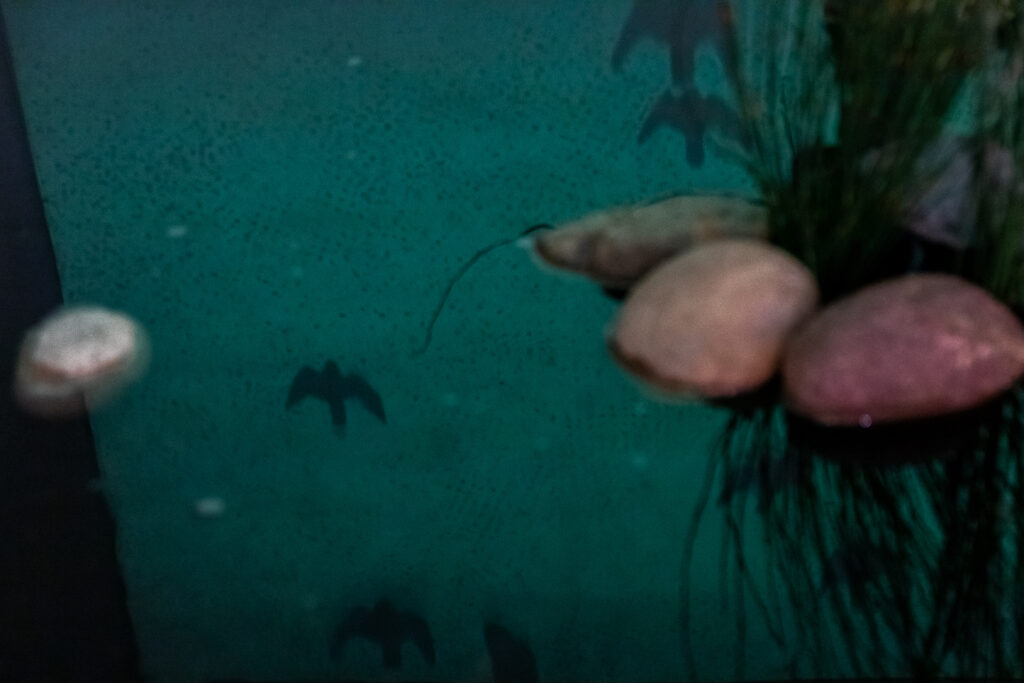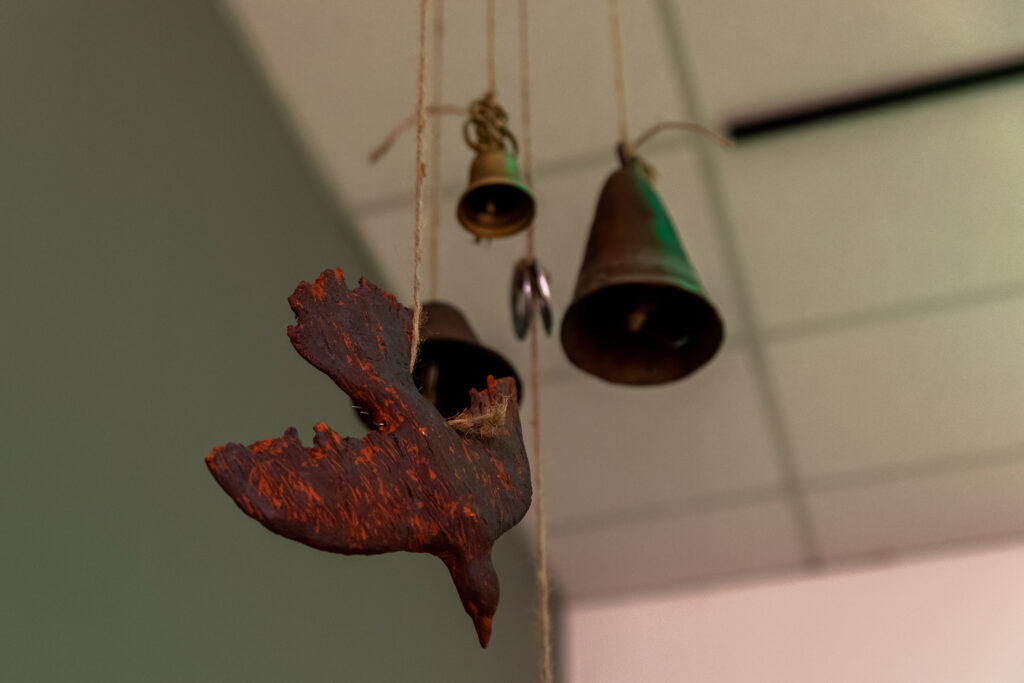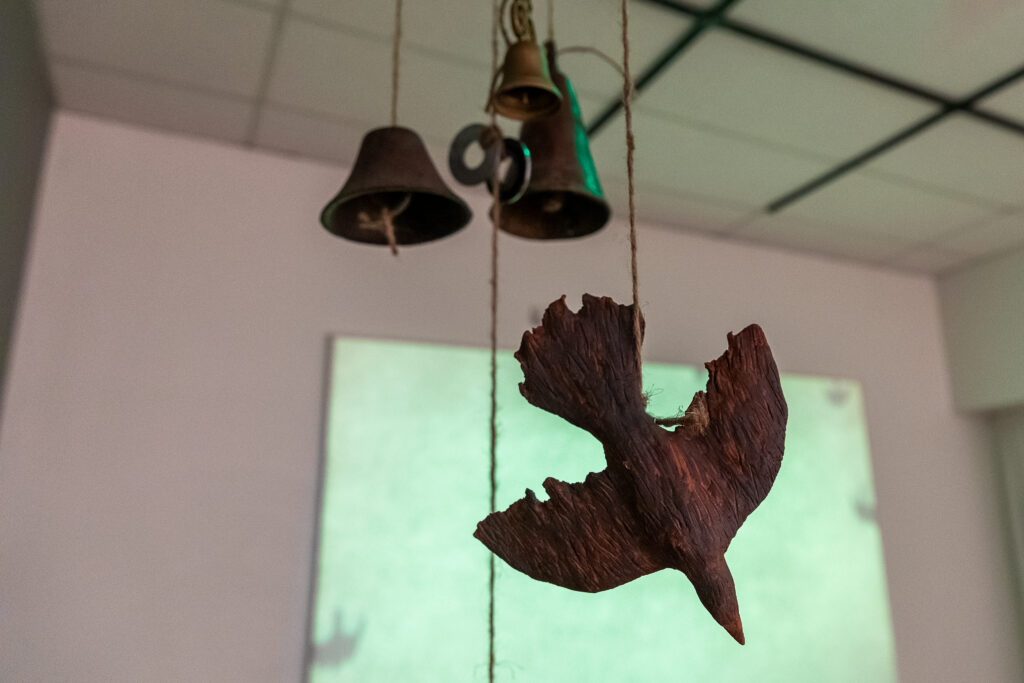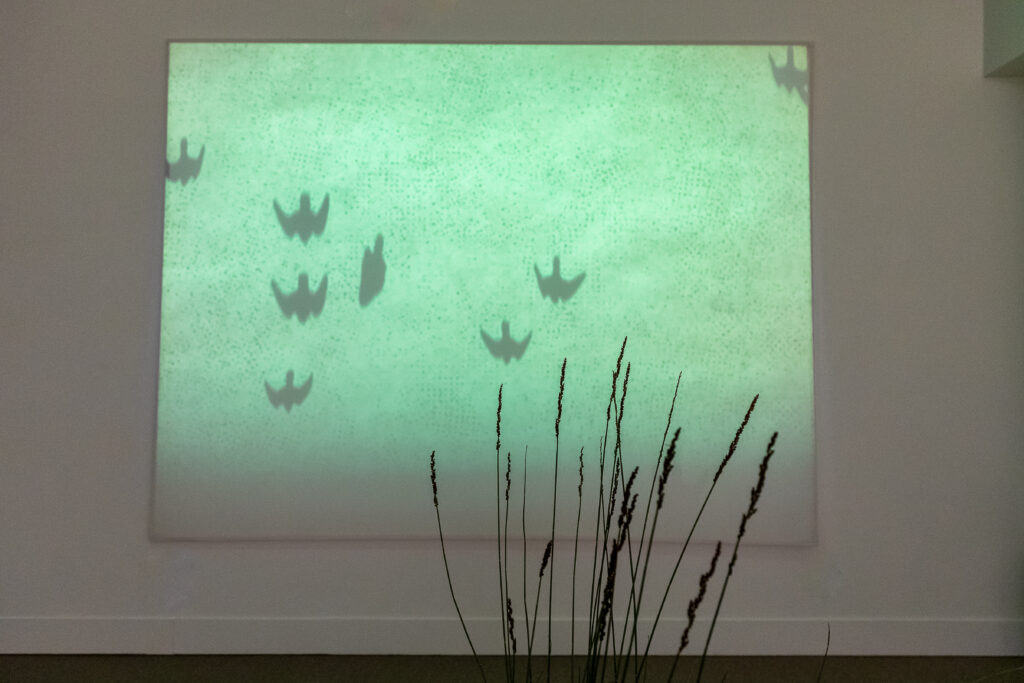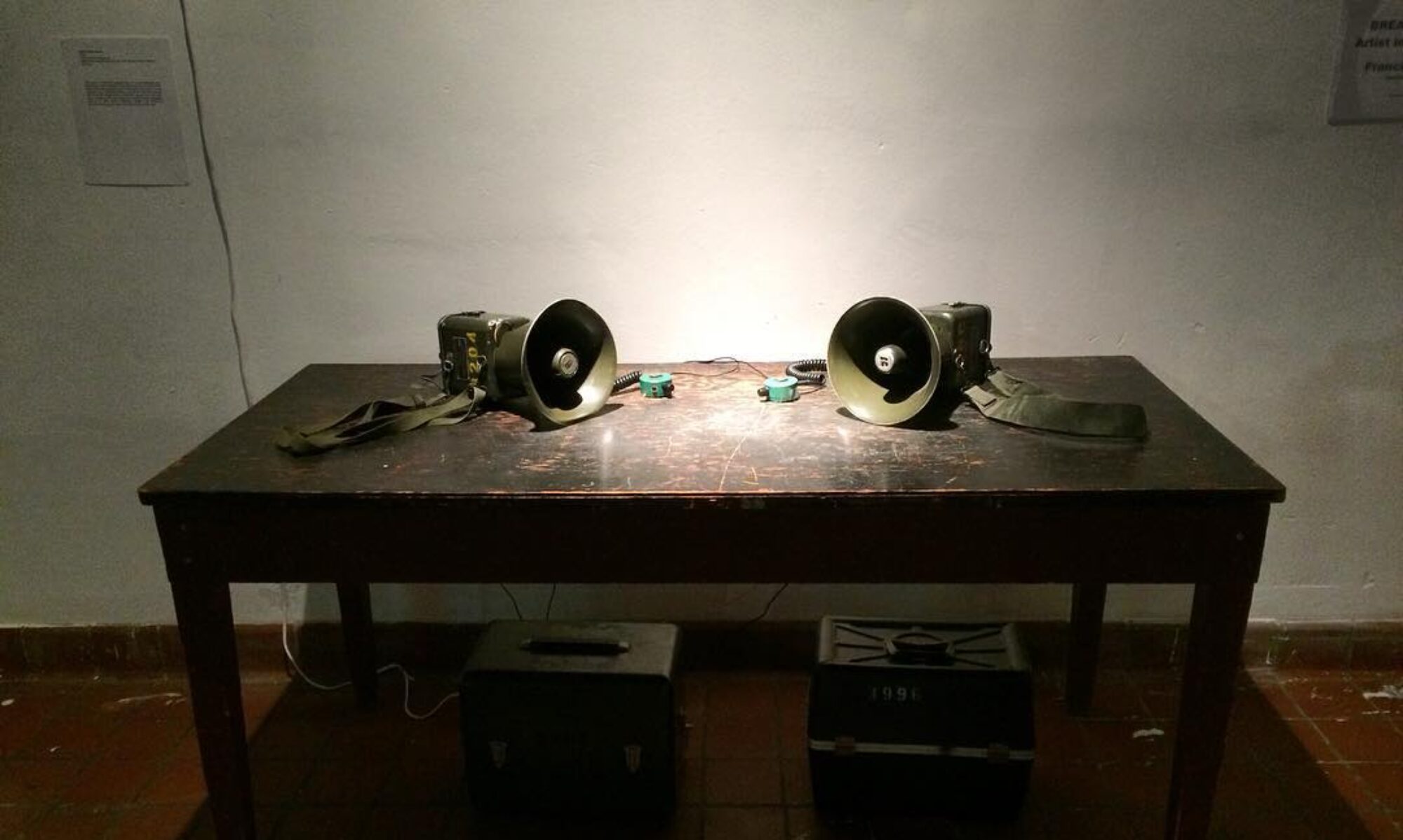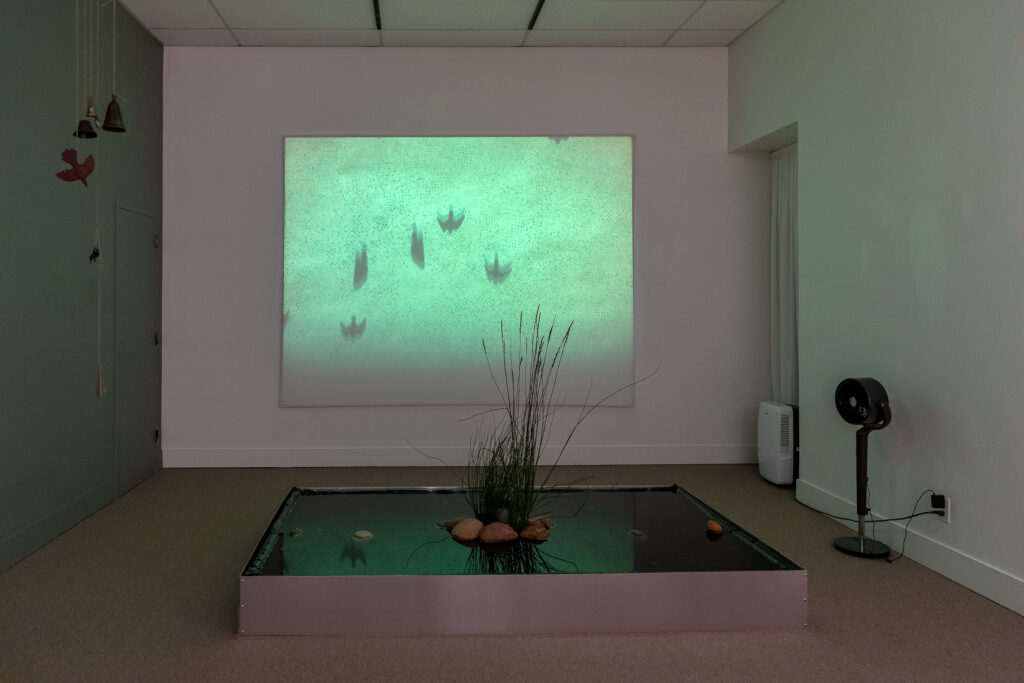
Francisco Eme’s Lluvia de pájaros is a poetic landscape that features a mass exodus of bird silhouettes diving, or worse, falling from the sky towards an artificial pond. Birds only ever move this direction if hunting or dying. In English, the title is a double entendre, suggesting the birds are taking over; perhaps a reign of terror as in the Hitchcock film. This is not a realistic scene, but one of symbolism and metaphor. This is a work of contrasts: living and dying, natural and artificial, beginning and ending, reality and memory. Birds are symbols of freedom, hope, as well as apocalyptic omens. Carl Jung saw birds as messengers between the earthly and spiritual realms. Lluvia de pájaros has an undeniable dreamlike quality. A gentle breeze animates grasses, the surface of the pond, and three small bells hanging above; their sound connoting a death toll or maybe an angel getting its wings. The bells are accompanied by other handmade, clay utilitarian objects that perhaps belonged to someone. Birds have a special significance for Eme surrounding the death of his mother, a theme the artist has explored in prior work. As the viewer approaches the pieces, the birds can be seen reflected in the pond. However, the reflection reveals that they are not flying downward, but away. Lluvia de pájaros explores the tenuous connection between hopefulness, loss, and transcendence.
Lara Bullock – Curator, San Diego Art Prize 2024
